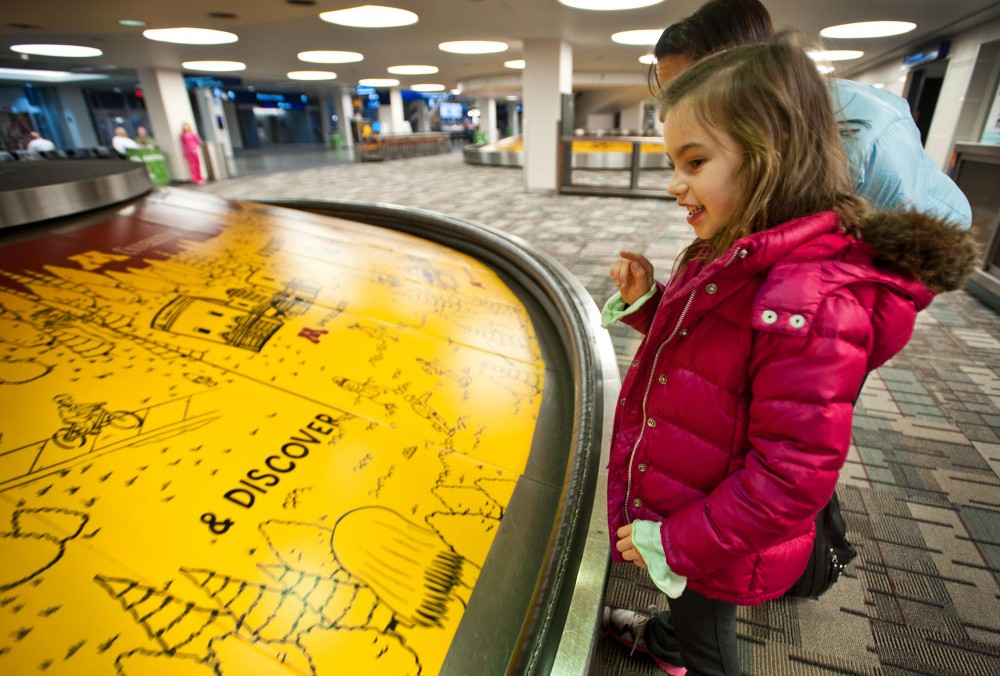The University of MinnesotaâÄôs Driven to Discover campaign is branching out this school year to get the most of a budget that has been cut by more than half over the past three years.
In addition to two television spots unveiled in October, the campaign added advertisements on two baggage claim carousels at the Minneapolis-St. Paul International Airport. On Wednesday the University announced a scholarship contest for students who make 30-second videos.
Driven to Discover launched in 2006 to target potential donors to the University and boost public awareness of its research.
This year, the campaign operates on an $850,000 annual budget âÄî down from the $2 million it had from 2006 to 2008, said Ann Aronson, assistant vice president of University Relations and director of marketing. In 2009, the campaignâÄôs budget was cut in half and its TV ads were pulled.
The student video contest will offer 16 scholarships to students through the University Foundation, which is funded by donations.
Voting âÄî by way of Facebook âÄúlikesâÄù âÄî will occur from Jan. 3 to Jan.17. The winning videos will eventually be circulated on the Internet.
âÄúWeâÄôre hoping that itâÄôs just students using their creativity to communicate in an interesting and somewhat entertaining manner about what really drives them at the University,âÄù Aronson said.
First and second places will receive $5,000 scholarships, and third through sixth will receive $2,500. The next 12 students will receive $1,000 for tuition.
Marketing the U
In its first three years, the campaign highlighted University research on topics like AlzheimerâÄôs disease, transplant organs and human aggression.
âÄúWe did our research and found out that the general public didnâÄôt understand what research meant and what the value was to them,âÄù Aronson said.
She said that TV ads are the most effective way to reach the largest number of opinion leaders.
When the University pulled its TV spots, the publicâÄôs perception of their message declined, according to an annual study conducted by Padilla Speer Beardsley, a local public relations firm. The study found public understanding of the UniversityâÄôs mission and research was strongly tied to the television ads.
Last school year, the University put ads back on the air. But instead of creating three or four ads, the campaign ran two in the fall and the spring.
The University fashioned two new Driven to Discover ads, which debuted on TVs across the state about a month ago. They will not run again in the spring because of budget constraints, Aronson said.
The new ads focus on studentsâÄô experiences at the University, beginning with the first day of school, and flash to the studentsâÄô finding their academic interests. One ad focuses on a dancer and the other on an entomologist working with honeybees.
Despite their focus on students, the ads are still targeted at opinion leaders, Aronson said âÄî those who volunteer, fundraise and advocate at the Legislature for the University. She said President Eric Kaler played a large role in picking storyboards for each of the ads.
âÄúWeâÄôve gotten a lot of positive anecdotal responses that itâÄôs great to see students front and center in the campaign,âÄù Aronson said.
Different avenues
The University spent $45,000 to wrap two baggage claims at MSP airport with vinyl ads that challenge travelers to find pictures of University discoveries as the carousel rotates.
It was the first time the airport sold space on its baggage claims as advertising, said Melissa Scovronski, an airport spokeswoman. Baggage carousel ads have been common practice at other airports for about three years, according to Steve MacKelvie, a vice president of properties at the advertising firm JCDecaux.
âÄúItâÄôs the first University in North America to my knowledge to advertise on the baggage carousels,âÄù MacKelvie said, whose company manages the airportâÄôs advertising. Usually, carousels advertise destinations: casinos, resorts and restaurants, he added.
âÄúI was pleasantly surprised at what they look like,âÄù Scovronski said. âÄúTheyâÄôre eye-catching.âÄù
The 2011 campaign also includes scoreboard displays at TCF Bank Stadium, University home page stories and floor clings at campus athletic venues.
âÄúThe new commercials bring this idea to the student audience through the voices of individual students who share their own stories,âÄù said John Eighmey, a professor of advertising at the University, in an email.
âÄúThe University has a variety of key audiences: the citizens of Minnesota, parents, prospective students, current students, university employees, alumni and opinion leaders.âÄù








